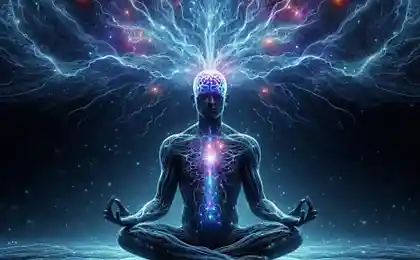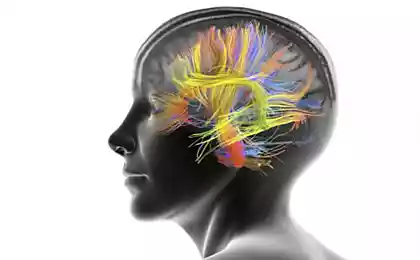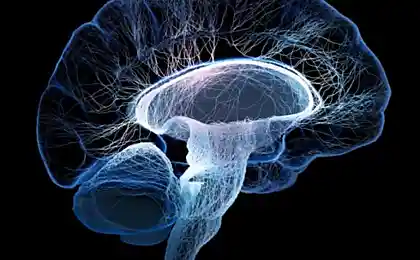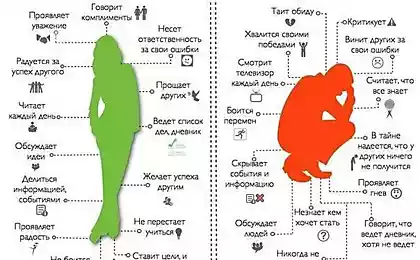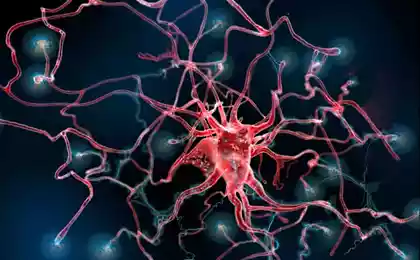287
Evolutionary brain regions: from reptiles to humans
The human brain can be called the most complex structure in the universe. This amazing organ, weighing only about 1.5 kg, contains approximately 86 billion neurons and quadrillion synaptic connections. But most interestingly, our brains hold hundreds of millions of years of evolutionary history. Like archaeological layers, it can reveal ancient structures inherited from distant ancestors. Not only does this evolutionary hierarchy explain our behavior, but it also helps us understand why we sometimes act irrationally, obeying ancient instincts.
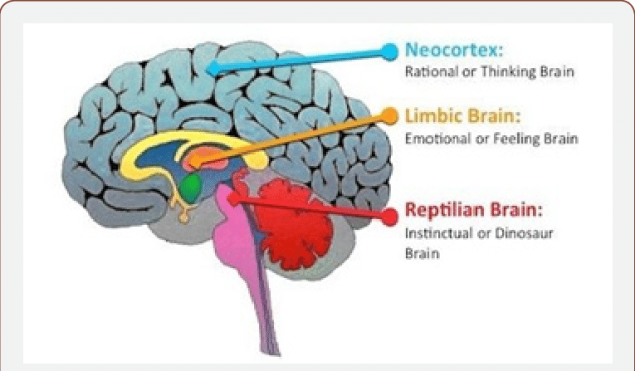
Three-layer model of the brain: a journey into the depths of evolution
The popular and graphic concept of the “triune brain,” proposed by neuroscientist Paul McLean in the 1960s, describes the human brain as a structure of three evolutionary layers. Although modern neuroscience looks at the structure of the brain more comprehensively, this model remains a useful tool for understanding our nature.
The three major evolutionary brain regions are reptilian (brain stem) limbic (referred to as the monkey brain) and neocortex ("the human brain"). Each of them was formed at a certain stage of evolution and is responsible for its set of functions, from basic instincts to higher thinking.
Reptilian complex: the oldest part of the brain
The reptilian complex (or R-complex) is the oldest part of the brain, formed about 500 million years ago. Includes the basal ganglia, cerebellum and brainstem. This area regulates the fundamental processes necessary for the survival of the organism.
- Breathing, heartbeat, and other autonomous functions
- Territorial instincts and aggression
- Ritual and hierarchical behavior
- Basic reactions "fight, run, freeze"
- Regulation of sleep and wakefulness
This ancient part of the brain makes us act according to patterns and stereotypes. It is incapable of abstract thinking and creativity, but it provides instant responses to threats. A significant part of our automatic reactions and impulsive actions is the result of the activity of the reptilian complex.
The limbic system: the emotional "monkey" brain
Mammalian brain development led to the emergence of the limbic system about 150-200 million years ago. This complex of structures includes the hippocampus, amygdala, cingulate gyrus and other formations. The limbic brain is responsible for:
- Emotional reactions and attachments
- Memory formation and learning
- Motivation and reward
- Social interaction and group formation
- Mood regulation and emotional intelligence

The limbic system is closely related to the formation of social hierarchies and group behavior characteristic of primates. This is where the emotions are born that push us to build relationships, create families and communities. Interestingly, many psychological problems (depression, anxiety, phobias) are associated with impaired functions of the limbic system.
Lifehack: How to Calm Your Monkey Brain
When your emotions take over, use the 90 seconds method. Neuroscientist Jill Bolt Taylor found that the physiological emotional response lasts about 90 seconds. Take a deep breath, count to 90, watching your feelings. This will give the neocortex time to step up and take control of the emotional impulse of the limbic system.
Neocortex: the highest “human” brain
The neocortex is evolutionarily the youngest and most developed part of the human brain, occupying about 76% of its volume. This layer began to form about 2-3 million years ago, reaching its maximum development in Homo sapiens. The neocortex is responsible for:
- Abstract and logical thinking
- Language and speech
- Awareness and self-awareness
- Future planning and decision-making
- Creativity and imagination
- Higher cognitive functions
It's important to understand: The prefrontal cortex does not fully mature until the age of 25. Before this age, people are more prone to impulsive decisions and risky behaviors, as the mechanisms of control over ancient brain structures are not yet fully formed.
Internal Conflicts: The Struggle Between Brain Regions
The most interesting feature of our brain is the constant interaction and sometimes conflict between its evolutionary parts. In stressful situations, ancient structures often take precedence over rational neocortex, which explains many “illogical” behaviors.
Situation Response of ancient departmentsReaction of neocortexSudden dangerSudden fight-or-flight response (reptile brain)Analysis of the situation, search for rational solutionsSocial rejectionFear, anxiety, stress (limbic system)Rational understanding of the situation, search for constructive exitsSeduction of pleasant but harmful foodStriving for immediate pleasure (limbic system)Assessment of long-term consequences for healthConflict with an authoritative figureSubmission or aggression (reptile + limbic system)Ration of rational understanding of the situation, search for emotional embolism and compromise between various parts of the brain. When ancient brain regions feel threatened, they can block rational thinking, forcing us to act on primitive scenarios.
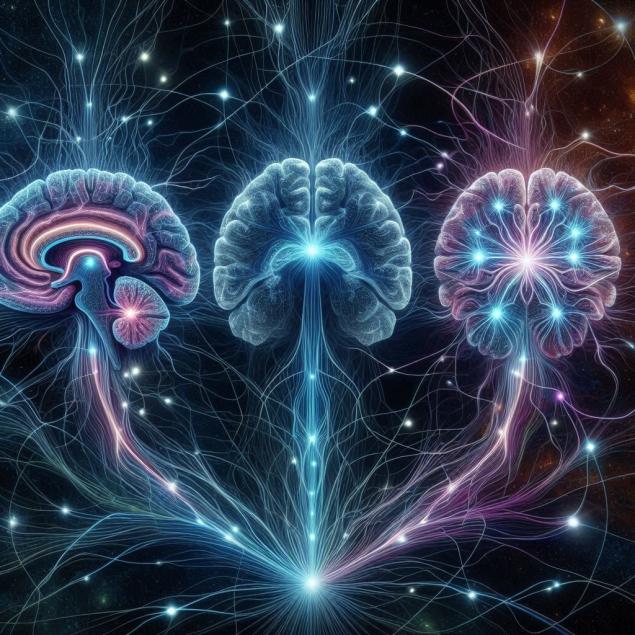
Hierarchies in Human Society: A Reflection of Brain Evolution
The structure of human societies often reflects the hierarchical structure of our brains. Basic needs (security, nutrition, reproduction) are related to the reptilian complex. Social ties, group identity, and cultural norms correspond to the limbic system. The development of science, art, and philosophy is the higher functions of the neocortex.
Maslow described a hierarchy of needs that remarkably fits the evolutionary layers of the brain: from physiological needs (the reptilian brain) and security, through social needs (the limbic system) to self-actualization (the neocortex).
Throughout human history, we have seen a gradual transition from societies dominated by reptilian values (survival, territoriality, physical domination) to social structures where “neocortical” values – human rights, ethics, science, art – play an increasingly important role.
How to live in harmony with your three-layer brain
Lifehack 1: Managing stress through breathing
Under severe stress, the reptilian brain can take control, blocking access to higher cognitive functions. The 4-7-8 technique (inhaling 4 counts, delaying 7 counts, exhaling 8) activates the parasympathetic nervous system, reducing the activity of ancient brain regions and regaining control of the neocortex.
Lifehack 2: Conscious pause before reaction
Practice “pause” before an emotional reaction. Count to 10 before responding to provocation. This time is enough to activate the prefrontal cortex and allow it to assess the situation rationally instead of the automatic response of the limbic system.
Lifehack 3: Development of neuroplasticity
Regular intellectual challenges (learning a new language, playing musical instruments, solving complex problems) strengthen the connections in the neocortex and increase its ability to control the reactions of ancient brain regions. Take at least 30 minutes every day.
Lifehack 4: Social support for the limbic system
The limbic system needs social connections to function properly. Regular quality communication with loved ones increases oxytocin levels and reduces the activity of fear and stress centers in the amygdala. Strive for deep, meaningful conversations instead of superficial contacts.
The Synchronization of the Three Worlds Within Us
Understanding the evolutionary structure of our brain provides amazing opportunities for self-discovery and personal growth. We don’t have to suppress the ancient parts of our brain – they perform essential functions and are an integral part of our nature. Instead, we should strive for a harmonious synchronization of all parts of the brain, where the neocortex acts as a wise conductor, not a dictator.
Our brains are living evidence of the evolutionary path that humanity has traveled. Understanding this path is the key to a better understanding of yourself and others. Remember that in each of us there are reptiles, monkeys, and intelligent people. Accepting this fact makes us more holistic and harmonious.
Glossary of terms
Basal ganglia are a group of subcortical forebrain nuclei involved in the regulation of movement and some forms of learning.
The hippocampus is a part of the brain’s limbic system that plays a key role in memory formation and spatial orientation.
The limbic system is a set of brain structures located on the border of the new cortex and brain stem responsible for emotional behavior and memory.
The amygdala is a part of the limbic system responsible for the formation and storage of emotional memory, especially those associated with fear.
Neuroplasticity is the ability of the brain to change its structure and function as a result of experience, learning, or injury.
The neocortex is the phylogenetically youngest part of the mammalian cerebral cortex, responsible for higher nervous functions.
The parasympathetic nervous system is a part of the autonomic nervous system responsible for restoring the body's resources, opposite to the sympathetic nervous system.
The prefrontal cortex is the frontal lobe of the cerebral cortex responsible for planning, making decisions, and controlling impulsive behavior.
The reptilian complex is the oldest part of the brain, which includes the structures of the brain stem and cerebellum, responsible for basic instincts and reflexes.
The brain stem is the part of the brain that connects the spinal cord to the large hemispheres, regulating vital body functions.
Regulation of online gambling in Kazakhstan: current state and prospects
Hogwarts faculties: Where would the Distribution Hat distribute you?
